When Scot Smyth decided to build his dream home in the hills west of Ft. Collins, Colo., he knew it had to be extraordinary.
“It’s a million dollar lot,” says John Hatfield, the ICF supplier for the project. “It sits on a beautiful mountain ridge, so one side has a stunning view of a nearby reservoir and the other side looks down over the City of Ft. Collins.”
Smyth challenged himself and his company, Smyth Builders, to build a unique, energy-efficient home that complemented the surroundings. He chose to build with ICFs, he says, because “I wanted a solid house built to last forever, with low maintenance, and high energy efficiency.”
The result, called “House at Empyrean Ridge,” is impressive—and popular. Of the dozens of homes that participated in the region’s Parade of Homes, it had the highest number of viewings. It also earned Smyth “Innovative Builder of the Year Award” from the Northern Colorado homebuilders association.
Exterior walls are constructed from Quad-Lock’s Plus Panel, with 4-1/4” of foam on each side of the 8” concrete core. “It was a matter of comparing the minimal added cost of the Plus Panel versus the much larger benefit of increased energy efficiency,” says Smyth. “The value of that will only increase over time,” In addition, the house incorporated two free spanning concrete walls that supported the roof but did not break-up the main floor space. This free span design allowed the plus panels to be used as a free spanning form that incorporated the structural roof beams into the sides of the wall system.
Through careful planning, Smyth kept waste to a minimum. “None of the waste foam left the site,” says Hatfield. “It was incorporated into the underslab insulation, increasing the effectiveness of the hydronic heating.” The 2×8 lumber used for the footing forms was re-used for window bucks. Protected by Fab-Form, the boards were completely clean and ready for reuse when stripped.
Smyth used “recycled concrete” throughout the job. Made from crushed granite aggregate and fly ash as a binder, it performed flawlessly. “We had absolutely no problems getting the walls poured,” reports Hatfield. The local ready-mix plant modified an existing mix design to match the slump and other requirements.
Smyth says most of the construction took place in the Colorado winter, but “once the workers had the windows in, they could use small salamanders and heat the entire home very efficiently.” The interior finish work was accomplished during the winter time period.
Fly ash concrete was used for the floors as well, which have radiant hydronic heat. Other flooring materials include cork, bamboo, and sandstone planking. Baseboard and other trim was sawn at a local sawmill from standing dead trees. The exterior cultured stone material was manufactured locally, adding to the green built nature
of the project by reducing material transportation costs.
In the kitchen, concrete countertops also feature radiant hydronic heat, “except for the place we dish out the ice cream,” jokes Smyth.
The 2,850 sq. ft. home is topped with an earthberm “living roof,” constructed of a metal pan concrete deck, topped with 11 ½” foam, 4” to 18” of growing medium, and plants. Note that the home is two stories in one section and therefore the roof surface is only 2,000 square feet. This concrete surface was sealed with a Polycoat liquid membrane prior to installing the insulation and soil.
To qualify as a “Built Green” home, the House at Empyrean Ridge needed 70 points. It scored 252. Energy Star raters gave the home a 5-Star-Plus designation, and commented that they had never seen a house so energy efficient, Smyth claims.
Currently, Smyth is in the process of designing a $1.5 million home for the adjoining lot. He’s planning on building it with Quad-Lock Plus Panels as well.
Project Statistics
Construction Team
Fast Facts
Like what you read?
Yearly Subscriptions Starting @ $30

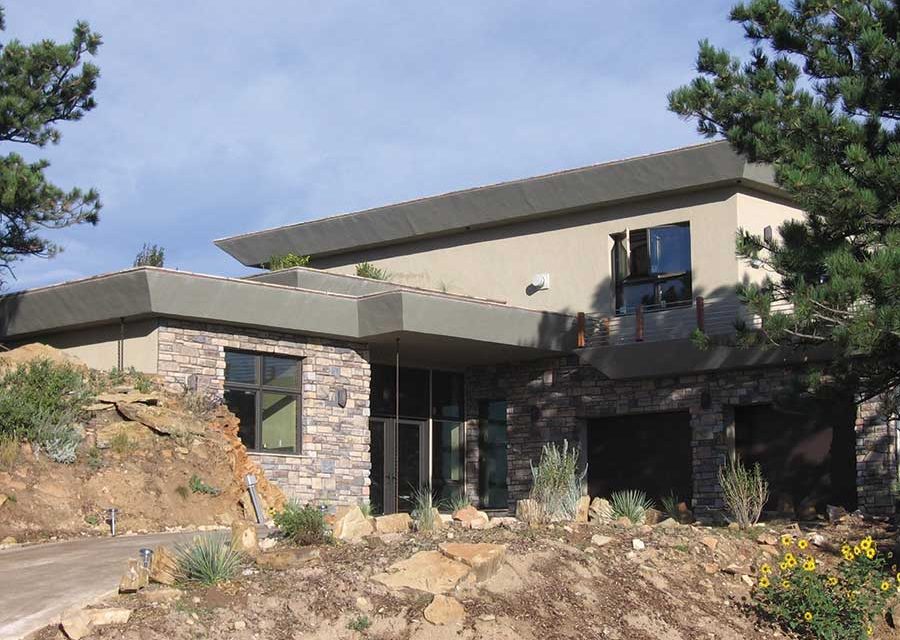
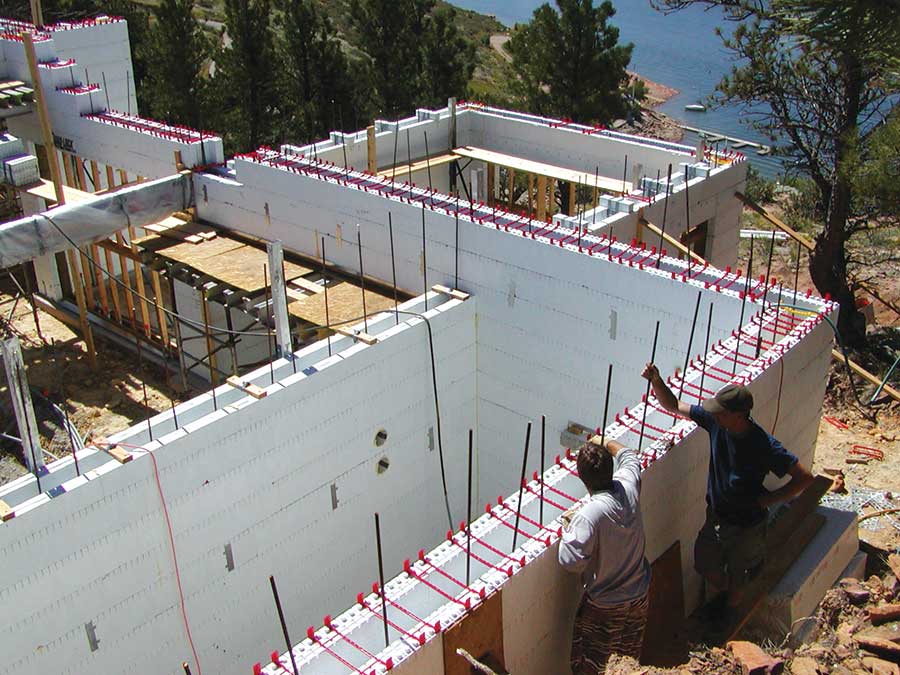
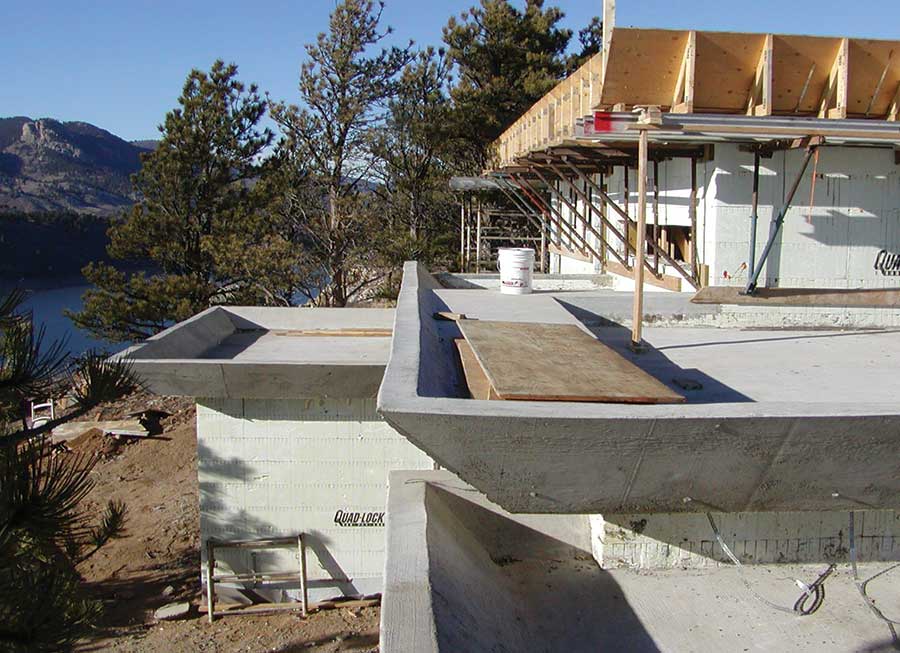
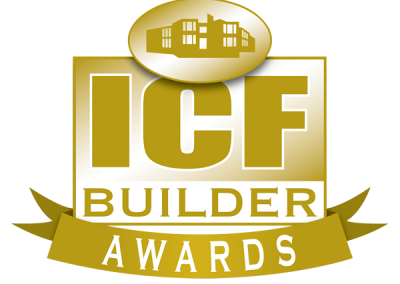

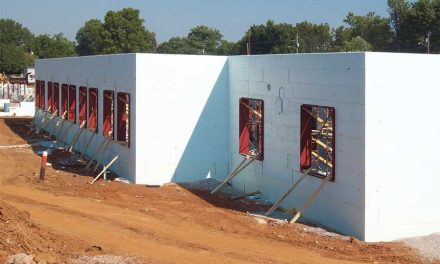
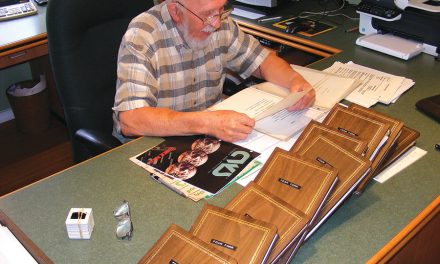
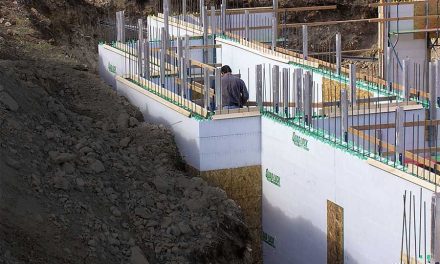
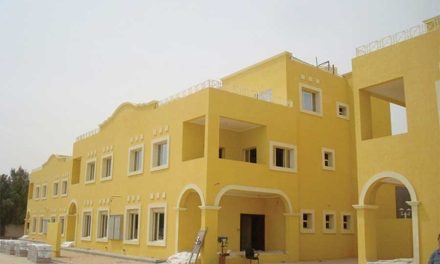







0 Comments